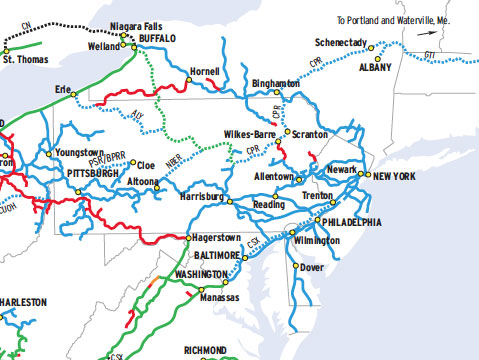
This Map of the Month appeared in the August 2003 issue of Trains magazine. Where does a railroad go? Might seem like the most basic of questions. But with trackage rights and service alliances, a railroad’s franchise — its sphere of influence — may extend far beyond the outermost mile of track it owns. […]
Read More…
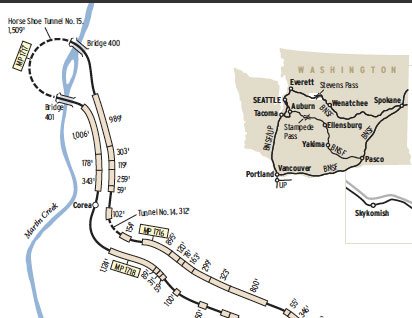
This Map of the Month appeared in the December 2005 issue of Trains magazine. Among the many hazards of running trains at high elevations in North America are the difficulties of snow, ice, and avalanche. This was well illustrated in Washington state where the Great Northern crossed the Cascades at Stevens Pass, named for John F. […]
Read More…
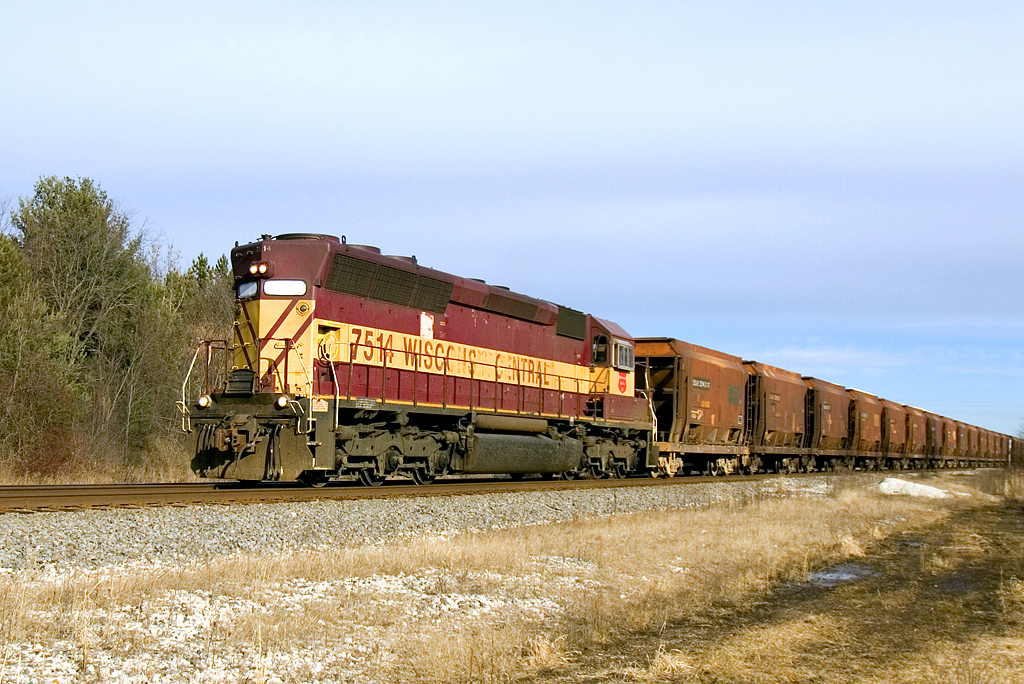
Long hood first, Wisconsin Central SD45 No. 7514 leads the rock train southbound through Vernon, Wis., on Jan. 2, 2007. Photo by Karl Riek […]
Read More…
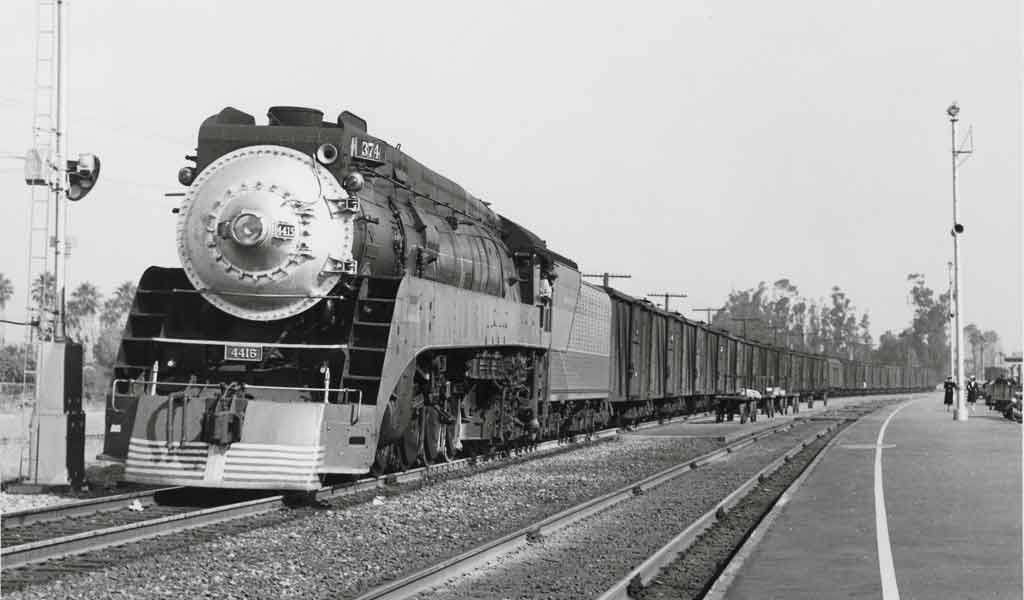
Near the end of its San Francisco–L.A. run, SP GS-2 4-8-4 4415 rolls “Overnight Merchandise” train 374 through Glendale. Herb Sullivan In 1954, when I was 14 years old, my family moved to within a few blocks of Southern Pacific’s Glendale Tower north of Los Angeles. I soon became friends with the second-trick towerman, and […]
Read More…
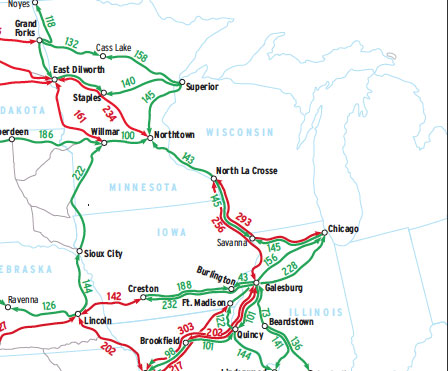
This Map of the Month appeared in the May 2004 issue of Trains magazine. If a system map is an archaeological record of mergers, acquisitions, abandonments, and line sales, then a crew-district map is the record of all of these, plus technological change and traffic pattern change, with a great deal of law and contract negotiations […]
Read More…

This Map of the Month appeared in the January 2004 issue of Trains. Al first glance, this looks like the route map of an airline. In reality, it’s BNSF Railway’s merchandise freight traffic network (i.e., cars not moving in unit trains from one common origin to one destination). It’s no coincidence they look the same, for […]
Read More…
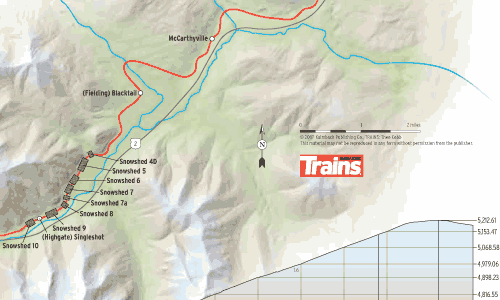
Great Northern Railway’s St. Paul, Minn.-Seattle transcontinental main line, now part of BNSF Railway, was built in the early 1890s as the northernmost such route in the United States, crossing the Continental Divide in the Lewis Range at Marias Pass, 5,213 feet above sea level. The Great Bear Wilderness in Lewis and Clark National Forest […]
Read More…
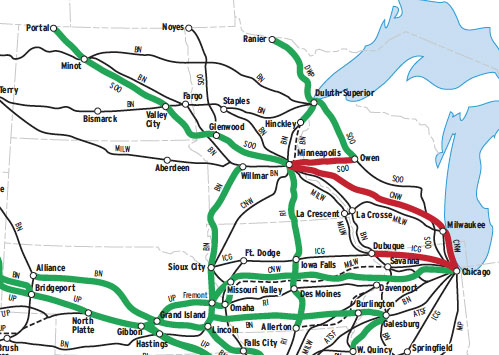
This Map of the Month was featured in the June 2003 issue of Trains magazine. We know railroads experienced a lot of traffic growth since they were deregulated in 1980, but where? And more importantly, which lines did better or worse than average? This map of western main lines compares the growth rate in tonnage […]
Read More…
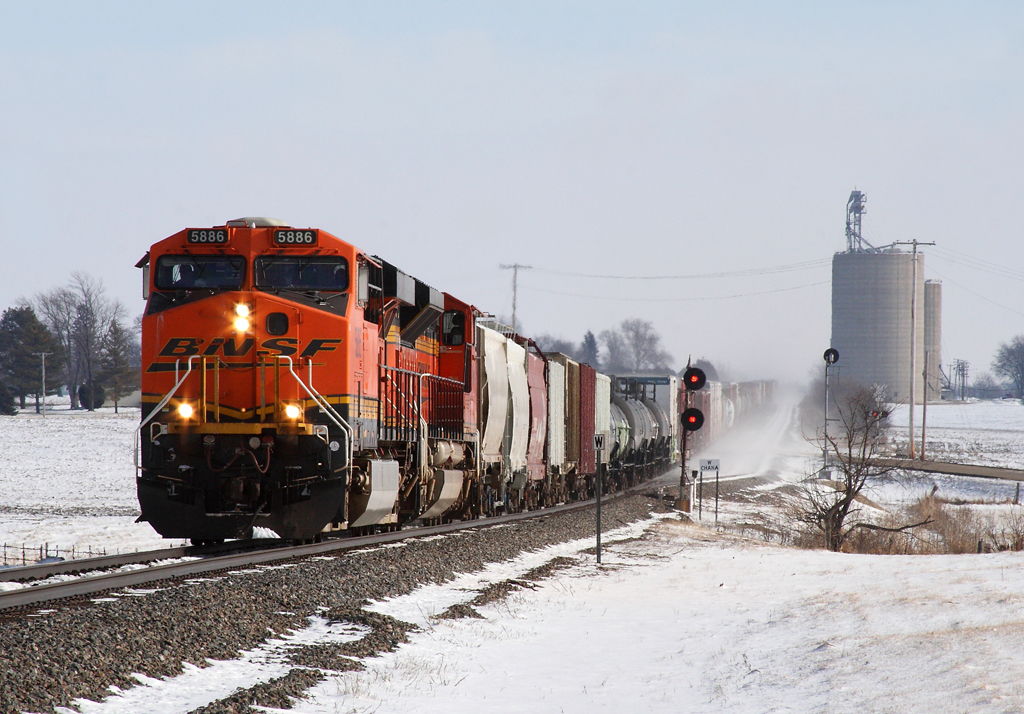
A westbound Z-train roars through West Chana, Ill., on the BNSF Aurora Sub. Photo by Nathan Beecher […]
Read More…
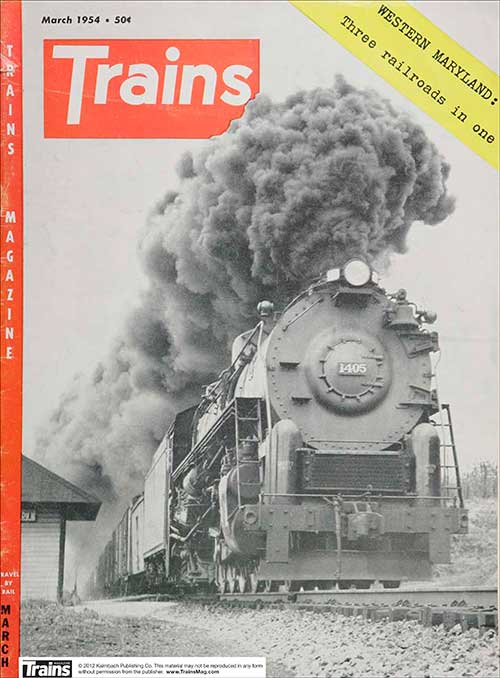
The Western Maryland, or “Wild Mary” as it was known to its many fans, was a a tenacious regional railroad, running west from Baltimore to the mountains of Pennsylvania and West Virginia. It was known for its fast freights, coal traffic, and the iconic Helmstetter’s Curve. Download this month’s Trains Express PDF package at the […]
Read More…
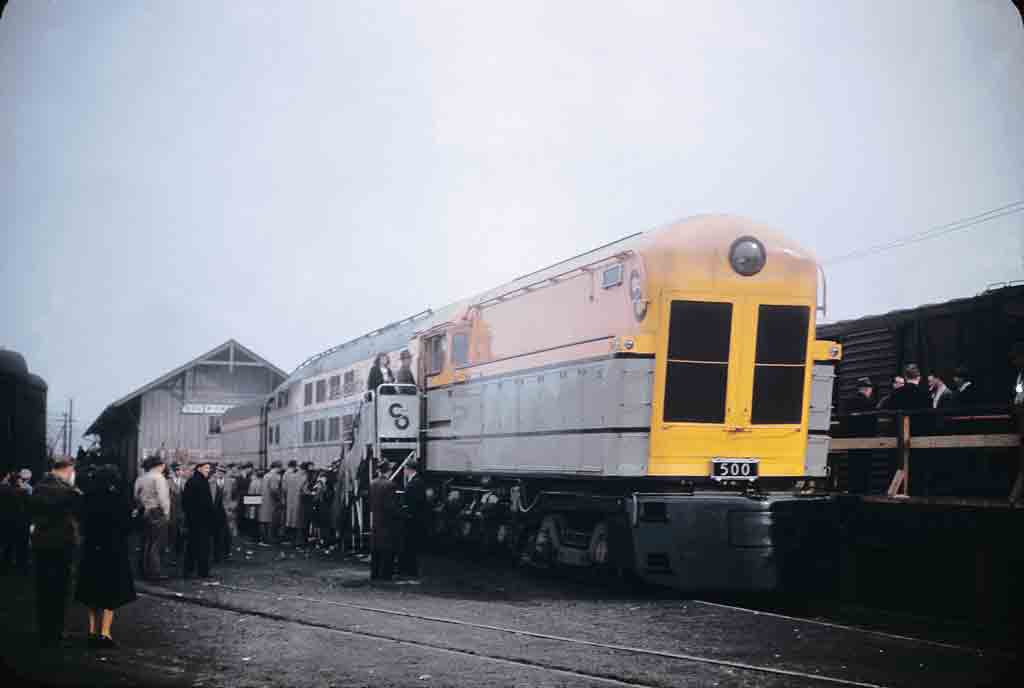
Townspeople of South Charleston, W.Va., inspect C&O 500, first of the road’s trio of colossal steam-electric-turbine locomotives intended for its new Chessie train, on Dec. 4, 1947. Ogden Willis, William J. Sparkmon coll. When Robert R. Young took over control of the Chesapeake & Ohio, he started looking for ways to improve the railroad. After […]
Read More…
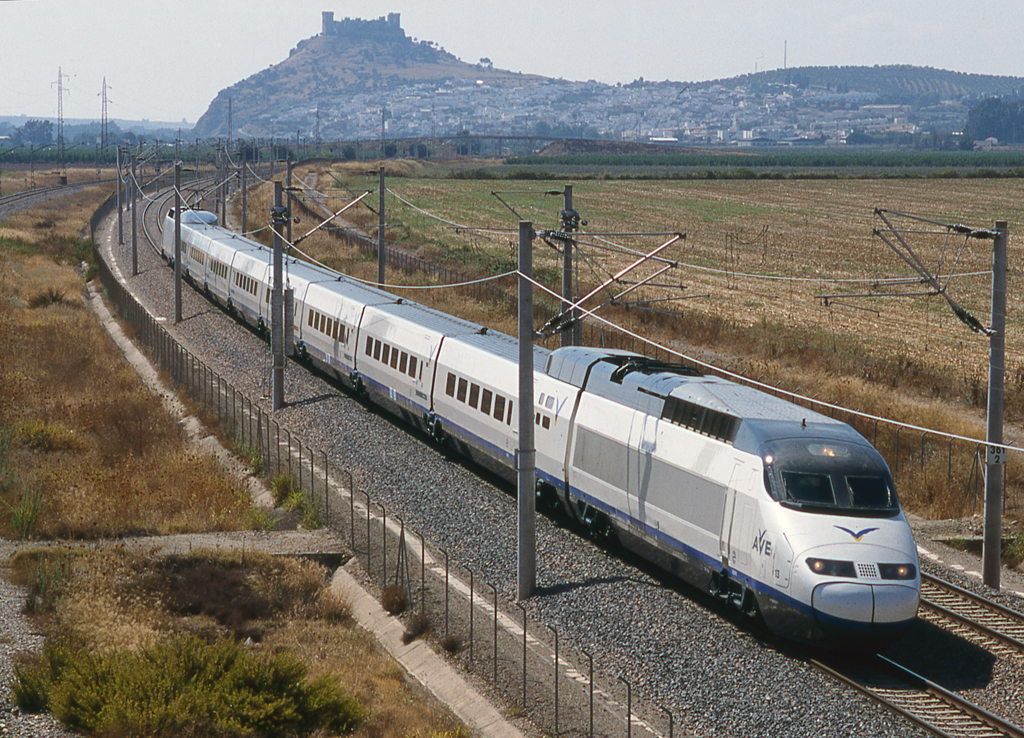
An Alta Velocidad Espanola train soars through Cordoba, Spain, on March 21, 2010. AVE, as it’s known, is also the Spanish word for “bird.” Photo by Brian Solomon […]
Read More…












